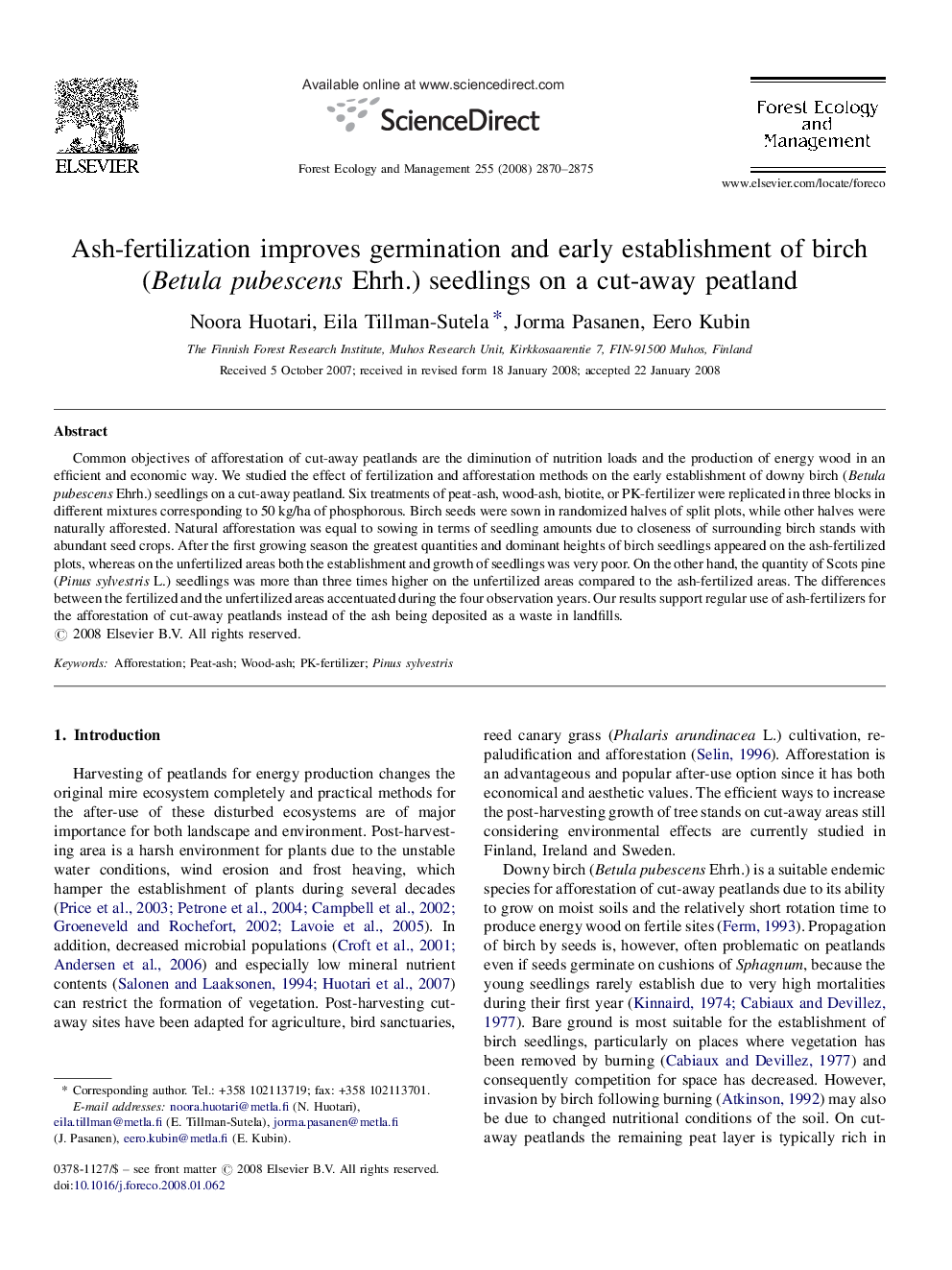| Article ID | Journal | Published Year | Pages | File Type |
|---|---|---|---|---|
| 89423 | Forest Ecology and Management | 2008 | 6 Pages |
Common objectives of afforestation of cut-away peatlands are the diminution of nutrition loads and the production of energy wood in an efficient and economic way. We studied the effect of fertilization and afforestation methods on the early establishment of downy birch (Betula pubescens Ehrh.) seedlings on a cut-away peatland. Six treatments of peat-ash, wood-ash, biotite, or PK-fertilizer were replicated in three blocks in different mixtures corresponding to 50 kg/ha of phosphorous. Birch seeds were sown in randomized halves of split plots, while other halves were naturally afforested. Natural afforestation was equal to sowing in terms of seedling amounts due to closeness of surrounding birch stands with abundant seed crops. After the first growing season the greatest quantities and dominant heights of birch seedlings appeared on the ash-fertilized plots, whereas on the unfertilized areas both the establishment and growth of seedlings was very poor. On the other hand, the quantity of Scots pine (Pinus sylvestris L.) seedlings was more than three times higher on the unfertilized areas compared to the ash-fertilized areas. The differences between the fertilized and the unfertilized areas accentuated during the four observation years. Our results support regular use of ash-fertilizers for the afforestation of cut-away peatlands instead of the ash being deposited as a waste in landfills.
